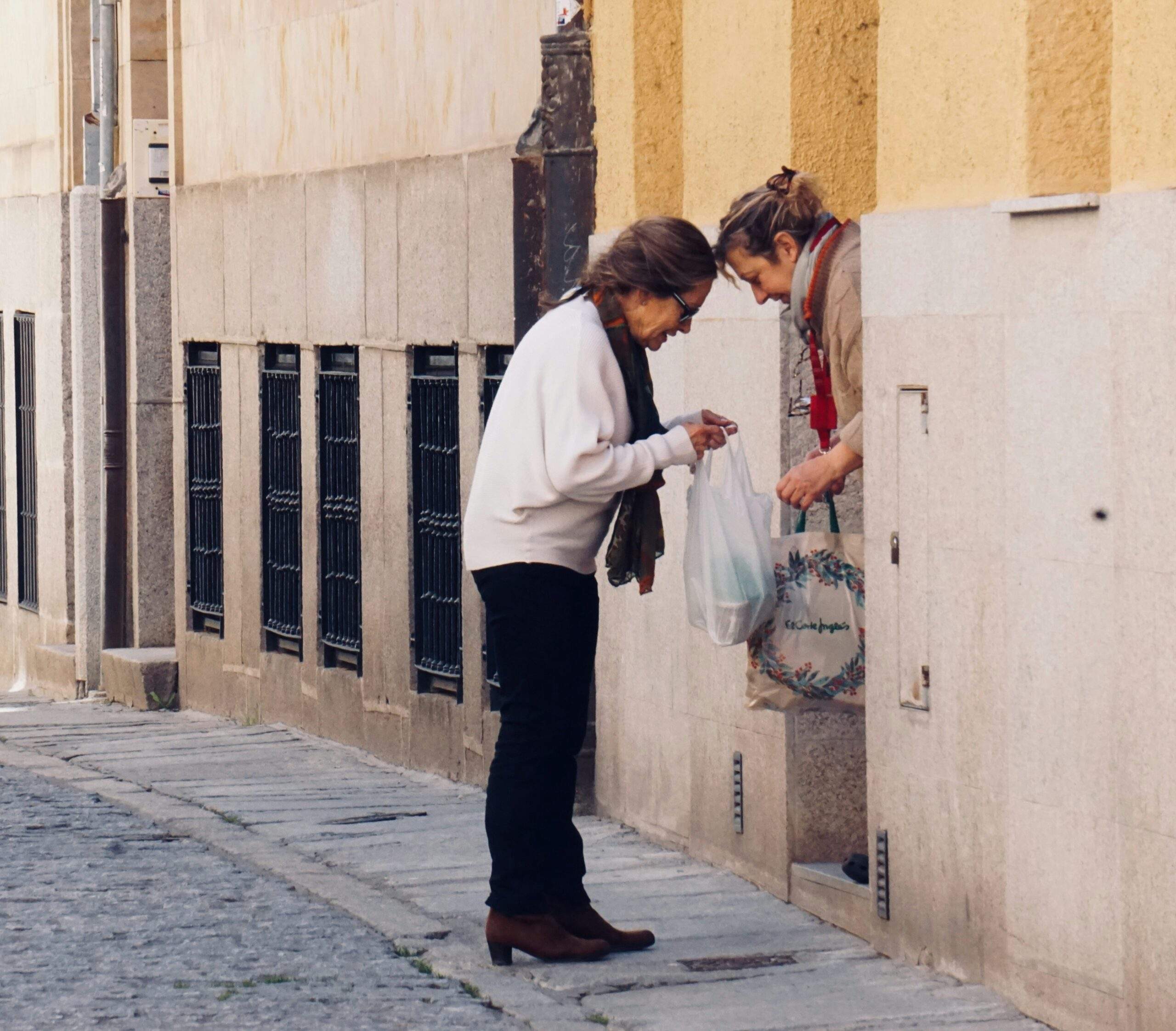Mindfulness involves several attitudes of mind that are pivotal to the transformation and liberation of the mind: befriending, compassion, joy and equanimity. These qualities are seen as the foundations of all our development as we embark on a path of mindfulness practice.
Every one of us can cultivate, train, and naturalize these four qualities, in the same way that attention can be trained and developed. In the face of great distress, though, befriending, compassion, joy, and equanimity can disappear just when they are most needed. Today, we’re going to focus on the second of these qualities: compassion.
What Does It Mean to Grow Our Compassion?
Like all capacities, our capacity for compassion grows when we tend to it and nourish it. We have all experienced moments of compassion when the heart softens in the face of pain, distress, and suffering, and when we can be open to the vulnerability that is part of the human experience. These moments can be close to home—such as when a child in our family is sick, or an elderly relative becomes increasingly frail—or on the world stage, such as when we hear about a devastating natural disaster or an innocent bystander grievously injured in an act of senseless violence. In these moments, the divide between self and other softens, the narratives of criticism and blame fade, and we inhabit, perhaps for a few fleeting moments, a world infused with kindness and compassion.
Compassion is an orientation of mind that recognizes pain and the universality of pain in human experience and the capacity to meet that pain with kindness, empathy, equanimity and patience. Its roots in Latin (compati) are to suffer with. Its affective tone is deep care, connection, and responsiveness. It is not, however, an emotion—rather, compassion is an understanding imbued with intention. The near enemy of compassion is pity, because self and other are separated and there is a sense of “I am looking down on your suffering.” Compassion’s far enemy is the wish to see someone harmed, or outright cruelty.
Compassion is central to all of the great foundational spiritual traditions, including Christianity, Buddhism, Hinduism, Judaism, and Islam. Although it takes different forms, the intention to transcend self-centered concerns and the invitation to respond compassionately to pain and suffering is present in each. What is also present in each tradition is the notion that compassion can be trained and cultivated—that sustained and dedicated practice can educate and re-educate the heart. So, although compassion is deep in our natures—present in us even as infants—education, cultivation, training, and practice can help us bring greater intentionality and a wider ethical framework to our compassionate response.
What Does a Compassionate Response Look Like?
As we learn to cultivate compassion in each moment and throughout our lives, we can also learn to differentiate the parts of a compassionate response. Compassion starts with recognizing and acknowledging pain and distress— with this quality of a trembling heart or empathic resonance—and being willing to see and turn toward the difficulty with stillness, wholeheartedness, and receptivity. But crucially embedded in this recognition of pain and distress is a willingness to engage with our bodily sensations, feelings, thoughts, and life circumstances with steadiness, kindness, and care: “I don’t have to endure this pain for the rest of my life, nor let it rule me. I only need to meet it in this moment as a guest, and treat it, as best I can, with kindness and care.”
Mindfulness teaches us to be still and curious in the midst of adversity, to allow for its presence, to explore its landscape, and to befriend it.
So often we have demonized pain and sorrow to the extent that avoidance, flight, or fixing are felt to be our only options. These conditioned responses are, however, a major obstacle to invoking compassion. Worse than that, they maintain our suffering. Mindfulness teaches us to be still and curious in the midst of adversity, to allow for its presence, to explore its landscape, and to befriend it. This is befriending in action, but here the action is to invoke compassion in the face of pain and suffering. This requires patience, resolve, and courage. Initially, this might feel counterintuitive and wrong, since our patterns of avoidance or fixing the difficult are so familiar and understandable to us. In taking this first step, though, we stop allowing suffering to define our lives and who we believe ourselves to be. We learn instead to allow, meet, and even embrace vulnerability rather than fear it. Our recognition of pain and distress is now imbued with this empathic resonance: “Ah, here is pain; it’s OK. I can be alongside this with kindness and care.” It becomes clear that our willingness to be fully present in the midst of pain creates new opportunities for a compassionate response.
How Mindfulness Nurtures an Empathic Resonance
Mindfulness teaches us to calm the tendency to blame, shame, and judge others or ourselves for the pain or suffering in our life. Blame and judgment do little to alleviate distress, but compound it and disable our capacity to understand it. Blame and judgment generate endless narrative and rumination that cloud us from seeing alternative ways to ease our pain and distress.
As we cultivate mindfulness and turn toward the present moment just as it is, we come to understand that although there is not always a solution to suffering, there is always a possible response. Understanding that not all pain can be fixed is not a prescription for passivity. Instead, it is an encouragement for us to find a response that can care for even the direst pain. Finding the willingness to stop running from pain is the first step toward a compassionate response. Not all pain and affliction can be fixed, but all pain and affliction is eased when held with tenderness and compassion.
Understanding that not all pain can be fixed is not a prescription for passivity. Instead, it is an encouragement for us to find a response that can care for even the direst pain.
Developing a stance of care and empathy helps us understand suffering, its causes, and its end, even when the end is found in the midst of the continuing difficulty. This understanding does not in any way diminish or dismiss our present-moment experience, yet we come to understand that we are not alone, but part of a human family that has vulnerability at its core. As compassion is cultivated, we gain dignity and widen our concern to include the suffering of others—the suffering that is present in a wider common humanity. The matrix and phases of compassion loosen the sense of me and mine, you and yours; we glimpse a world where suffering and joy are seen as part of the human condition, to be recognized, met, and allowed. This creates the conditions for a more compassionate responsiveness. Without this understanding, compassion can falter because we limit it to the conditions and people we think are deserving—it becomes ideological and constrained.
This sort of conditional compassion inevitably backfires, fueling fear and alienation. Divisions are created when we think “This pain is OK, this is not, this person is deserving of compassion, this person is not.” Understanding and compassion arise together and mindfulness practices teach us how to care. Consider suffering where there is no blame, a sick child, those caught up in a natural disaster such as a tsunami, the elderly whose health is failing. Then consider the suffering brought on by perpetrators, the refugees escaping ethnic conflict, people who were victimized who go on to victimize others. These examples illustrate the mind’s natural tendency to create a narrative that includes blame, perpetrator, and victim. When understanding and compassion arise together, though, we can respond with our hearts and minds. This protects us from habitual reactivity and enables us to respond with balance and care. It ensures that our responses are imbued with intentionality.
How to Meet the Losses, Unwelcome Changes, and Pain Without fear
Persistence is a key facet of empathy and compassion. Students of mindfulness learn to return their attention over and over to what is happening, just now, in the body and mind. Developing our capacity for sustained mindfulness in the midst of all things (e.g., pain, fear, or the desire to flee) reveals our growing ability for steadiness and resilience. We become more confident that we can meet distress with compassion. Persistence is not about gritting our teeth and stoically enduring pain. It is about caring and understanding how to meet the losses, unwelcome changes, and pain without fear.
We are affected deeply by the sorrows in our own lives and in the world that seem to have no end. One might ask the question: “What do we do with a heartache, a loss, an illness, a life that will bring afflictions that seem to have no end or solution?” Attending to this life and moment with compassion and care provides us with the key to freedom and balance. In committing our attention to the present, just as it is rather than being lost in the narrative of how it should be, we begin to develop resilience and courage, cornerstones in the development of compassion.
With mindfulness we learn that when we transform the present, we can create a new relationship with our past.
In mindfulness programs, this healing transformation is understood in a specific way. Transformation does not mean that distress and suffering disappear. There is little encouragement to delve into the past to dissect the conditions that have resulted in present-moment distress. Those conditions and events cannot be undone. Instead, with mindfulness we learn that when we transform the present, we can create a new relationship with our past. The transformation of the present is a process of changing our relationship to the narratives and somatic imprints of the past as they arise in the present, freeing us from the layers of anxiety, judgment, and narrative that compound distress. Compassion is central to that changed relationship.
Like all capacities, our capacity for compassion grows when we tend to it and nourish it. We are never short of opportunities to engage with this cultivation and need not wait for the dramatic moments of pain or distress. We can learn to mindfully listen to the small murmurs of distress in our bodies with tenderness and care. As we learn to recognize the thoughts and emotions of shame, anxiety, and blame—with tenderness rather than with judgment—we become more attuned to our inner life and the present moment. Our eyes increasingly begin to open to the world around us and we are touched by the vulnerability visible in so many of our encounters in a single day. We may open ourselves up to noticing, for example, the cries of a child, the cautious and faltering walk of an elderly person, the sight of someone begging on the street. In our noticing, we open ourselves to compassion and begin to sense, within ourselves, a heart that can tremble in the face of distress. Rather than turning away in fear or judgment, we start to find the courage and balance to embrace these moments with empathy and compassion.
Try This Mindfulness Exercise to Practice Nourishing Compassion:
- Taking your seat and turning your attention to your present‐moment experience, bring your attention initially to the places in your body that feel well and easeful. Perhaps attend to the palms of your hand or the sensation of your feet touching the ground.
- Attune your attention to a body of stillness, a body of restfulness, consciously softening any areas of tension.
- Sense what it is to cultivate a curious, caring attentiveness.
- Then extend your attention to parts of the body that feel unpleasant or tight, with the same quality of mindfulness. With the same sense of befriending, alternate your attention between the experience of wellness and any part of the body that feels stressed.
- Sense what it is to listen deeply to distress with empathy and compassion.
- When you feel able, extend your field of attention to include those you care for and the many people you meet each day who all have their own measure of joy and sorrow. Perhaps invite into your attention an image of a person struggling with uninvited life pain—loss, frailty, illness.
- Sense what it is to hold that person within an empathic resonance. You might experiment with a few simple phrases: “Allowing.” “Peace.” “Ease.” “Caring.
Excerpted from Mindfulness: Ancient Wisdom Meets Modern Psychology by Christina Feldman and Willem Kuyken. Copyright (c) 2019 The Guilford Press. Reprinted with permission of The Guilford Press.








